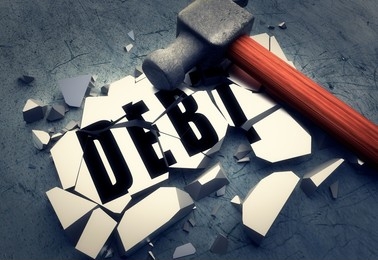In today’s economic landscape, managing debt efficiently is more crucial than ever. With inflation on the rise, it’s imperative to adopt smart strategies that enable you to pay down debt effectively. This article delves into the Debt Snowball Method, Debt Avalanche versus Debt Snowball, implementation steps, staying motivated, addressing common questions, the intersection of faith and finances, and celebrating milestones in your journey toward financial freedom.
💡 The Debt Snowball Method:
The Debt Snowball Method has gained popularity for its simplicity and effectiveness in tackling debt. Here’s how it works:
1. Prioritizing Debts:
- Smallest to Largest: Instead of focusing on interest rates, the Debt Snowball Method prioritizes paying off debts from the smallest to the largest balance.
- Harvard Business Review Endorsement: Researchers from the Harvard Business Review have endorsed the effectiveness of this method.
2. Timeline:
- 18 to 24 Months: Individuals using this method typically become debt-free within 18 to 24 months.
💰 Debt Avalanche vs. Debt Snowball:
Understanding the difference between Debt Avalanche and Debt Snowball is essential for choosing the right strategy:
1. Debt Avalanche:
- Interest Rate Priority: Debt Avalanche prioritizes debts based on interest rates, aiming to minimize the overall interest paid.
- Mathematical Optimization: It focuses on the most cost-effective approach to debt repayment.
2. Debt Snowball:
- Psychological Momentum: Debt Snowball emphasizes psychological momentum over mathematical optimization.
- Starting with Smallest Balance: By starting with the smallest balance, it provides quick wins, boosting motivation.
🛠 Implementation Steps:
Implementing the Debt Snowball Method involves several straightforward steps:
1. List Debts:
- Smallest to Largest: List your debts from smallest to largest balances, regardless of interest rates.
2. Minimum Payments:
- Maintain Minimum Payments: Make minimum payments on all debts except the smallest one.
3. Extra Payments:
- Focus on Smallest Debt: Apply any extra funds to the smallest debt until it’s completely paid off.
4. Repeat:
- Snowball Effect: Repeat the process, snowballing the payments from one debt to the next until all debts are cleared.
📈 Motivation and Progress:
Staying motivated throughout the debt repayment journey is essential. Here are some tips to keep you on track:
1. Quick Wins:
- Celebrating Small Victories: Quick wins, such as paying off the smallest debt, are crucial for maintaining motivation.
2. Visual Reminders:
- Goal Visualization: Keep visual reminders of your financial goals to stay focused and motivated.
3. Community Support:
- Seeking Support: Engage with a community of like-minded individuals for encouragement and support.
4. Acknowledge Progress:
- Focus on Your Journey: Avoid comparing your progress with others and acknowledge your achievements along the way.
🚫 Common Questions:
Addressing common questions and concerns regarding the Debt Snowball Method:
1. Interest Rates:
- Ignore Interest Rates: The method disregards interest rates, focusing solely on debt balances.
2. Emergencies:
- Emergency Fund: Pause the method only in emergencies requiring the use of the starter emergency fund.
3. Liquidating Savings:
- Accelerating Debt Payoff: Consider liquidating non-retirement savings to accelerate debt payoff, but proceed with caution.
🙏 Faith and Finances:
The intersection of faith and finances plays a significant role in debt management:
1. Tithing:
- Debt and Tithing: While in debt, tithing might be discouraged, but generosity is encouraged once debt-free.
🎉 Celebration and Tools:
Celebrating milestones and utilizing helpful tools along the way:
1. Debt-Free Date Calculators:
- Visualizing Progress: Utilize debt-free date calculators to visualize your progress and celebrate milestones.
2. Persistence:
- Endurance Pays Off: Remember that persistence and effort are crucial in the journey to financial freedom.
In conclusion, the Debt Snowball Method offers a practical and psychologically empowering approach to paying down debt faster, especially in an inflationary economy. By prioritizing small wins, staying motivated, and addressing common concerns, individuals can navigate their path to financial freedom successfully.
FAQs (Frequently Asked Questions):
1. Is the Debt Snowball Method effective for all types of debt?
- Yes, the Debt Snowball Method can be effective for various types of debt, including credit cards, personal loans, and student loans.
2. How often should I revisit my financial goals during debt repayment?
- It’s advisable to revisit your financial goals regularly, perhaps monthly or quarterly, to stay focused and motivated.
3. Can I modify the Debt Snowball Method to suit my specific financial situation?
- Absolutely! The Debt Snowball Method is flexible and can be tailored to fit your unique financial circumstances and goals.
4. What should I do if I encounter unexpected expenses while following the Debt Snowball Method?
- In such cases, it’s essential to reassess your budget and, if necessary, temporarily pause extra debt payments to address the immediate financial need.
5. How can I stay disciplined and avoid falling back into debt after becoming debt-free?
- Building and maintaining good financial habits, such as budgeting, saving, and avoiding unnecessary expenses, are key to staying debt-free in the long run.


